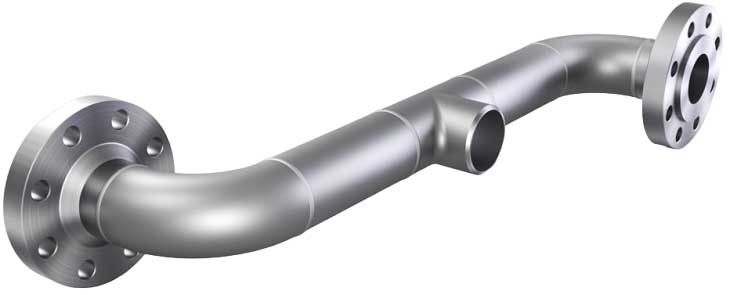Unit rate
Not all construction work can be perfectly priced at the outset. Often the scope of work is difficult to determine until the project starts. This is when a unit rate contract may be appropriate. Under a unit rate contract, individual parts of an entire project are broken down into quantifiable 'units' and priced, rather than establishing a fixed project price.
What is a Unit rate contract?
Under a unit rate contract, a construction company prices separate parts, or units, of the work to estimate the total project cost. Each unit is based on several variables, in combination or separately, such as materials, labor and overhead. As the scope of a project changes along the way, units can be added or removed. A unit rate contract, typically used for public construction projects, is especially useful for projects with an incomplete scope of work and with repetitive tasks and resource(s). A unit rate contract also helps eliminate the risk of a contractor submitting an incorrect estimate during the bidding process.
Unit rate vs. lump sum contract
A unit rate contract bases project costs on the number of units required for completion. Costs are gradually increased as the project progresses. A lump sum contract, also known as stipulated amount, reflects a total fixed fee for an entire project.
Key differences: Unit rate contracts and lump-sum contracts have some key differences, especially in terms of pricing flexibility. In unit rate contracts, companies price portions of the work but do not set a total price. Ultimately, the amount billed and paid reflects the completed work. A unit rate contract can be used for all or part of a project. In a lump sum contract, the company and client agree on a predetermined price for an entire project. This type of contract is typically used for well-defined, small-scale projects where changes are infrequent. Cash flow is easier to predict with a lump-sum contract.

Unit rate contract explained
Under a unit price contract, a company determines the cost of specific units of work without knowing exactly how many units will be needed to complete a project or maintenance work. Consider a construction company that needs to fabricate piping for a customer. Project units might include the cost of welding standard diameters into pipe systems, fabricating and assembling supports, fabricating and assembling steam tracing and so on. It also includes the various types of labor required, along with associated rates. Overhead costs such as equipment leasing, taxes and profit are also included. All of these individual items are added together to calculate a unit rate.
Example of a maitenance unit rate contract in a life plant
Let's dig deeper with an example on piping related unit rate.
The image below shows a pipe assembly with two welding neck flanges (above Class 300), two elbows 90 degrees, one equal tee, and two pieces of pipe; let's say the diameter is 3 inch (88.9 mm), and the wall thickness of all parts schedule 80 (7.62 mm). All materials are carbon steel: flanges ASTM A105, fittings ASTM A234 WPB and pipe ASTM A106.

Shop Welding Butt Weld
If this pipe spool is to be fabricated in a workshop, you can use the unit rate below.
| NPS | SCHEDULE | |||||
| A S M E |
DN | XS | 80 | 120 | 160 | XXS |
| 3 | 80 | 2.2 | 2.2 | 2.2 | 3 | 4.1 |
This example tells you, that you get 2.2 hours for a 3 inch schedule 80 carbon steel butt weld in which the operations below are included.
- Handling materials and (auxiliary) tools
- Preparation of the weld
- Sticking of the weld
- Welding of the weld
- Weld cleaning
- Applying/removing temporary supports
- Quality control of own work
The material factors listed below serve to compensate for the complexity of working with these materials, such as processing instructions, machining methods, welding methods, post-treatments, quality procedures, inspection requirements, and so on.
The standard data for welding in this example are based on carbon steels. If other materials are processed then the relevant factors apply.
| Cat. | Materiaal | Fac. |
| F1 | A106 Gr. B A333 Gr. 6 Chroom Molybdeen P1 |
1.0 |
| F2 | SS304, SS316, SS321, SS347 Monel Chroom Molybdeen P11, P12 |
1.40 |
| F3 | Duplex SAF Super Duplex |
1.60 |
| F4 | Aluminium Chroom Molybdeen P5, P21, P22 Hastelloy |
1.80 |
| F5 | Incoloy | 2.00 |
According to the unit rate, you can apply the factor of 1.8 for Hastelloy. That means the hours of 2.2 can be multiplied by 1.8, and you can claim 3.96 hours for a 3-inch S80 Hastelloy weld.
Field Welding
For welding in the field, a different unit rate applies.
The unit rate includes all labor for unloading and storage at the job site, loading and transportation to the job site, and rigging and alignment on site. It does not include welding, bolting, nuts and bolts, insulation, scaffolding, etc. A crane for lifting pipe spools and other equipment, is usually provided by the customer. But even here a contract based on unit rate is possible.
Welding in the field, also has other challenges.
- The first question is: Is it allowed to weld in the field?
- If welding is to be performed in a life plant, a lot of precautions will have to be taken.
- Think of a task risk analysis for that particular job, a standby fire guard, welding blankets to catch sparks, possibly a welding tent if weather conditions require it etc.
Important factors
Usually the material is supplied by the customer, if not, the contractor buys the material from a supplier approved by the customer, and can then charge a fee of about 10% on the bill. All material certificates then become the property of the customer.
Radiographic testing of a weld is usually subject to a separate unit price. A contractor can have a company, approved by the customer, perform the testing, and apply e.g. 10% fee to the bill.
Of course, it is also possible to include all welds by diameter, wall thickness and material quality, in a unit rate.
If a weld is rejected after inspection, the contractor must repair the weld at his own expense, the same applies to the 2nd repair. With a third repair, depending on customer requirements, the entire weld must be redone and again the costs are for the contractor. All additional radiographic (or other test methods) costs performed are in this case also for the contractor. Non-destructive testing (NDT) of the first weld will be paid, but inspections of subsequent welds will not.
 An excellent book for establishing a unit rate is Estimator's Piping Man-Hour Manual
by John S. Page.
An excellent book for establishing a unit rate is Estimator's Piping Man-Hour Manual
by John S. Page.It gives you almost every unit rate format imaginable in the world of piping.